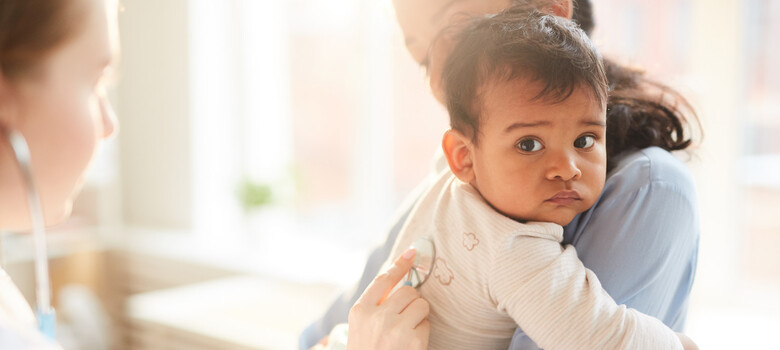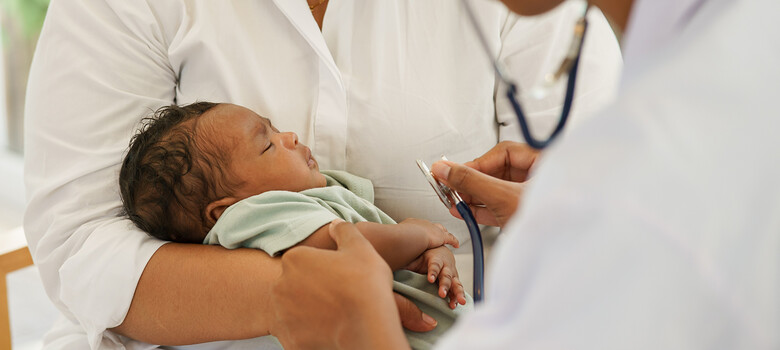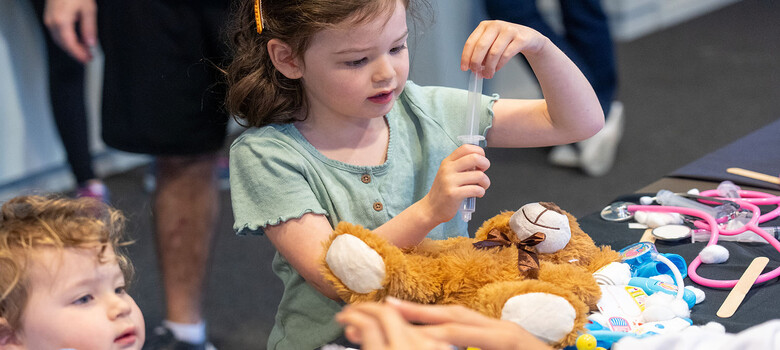Stay Home or Go to School?
Duke Primary Care Pediatricians Weigh In on a Dilemma Every Parent Faces

Let’s say your child has a low fever but is otherwise behaving normally. Do you send her to school? Clearly, a child who is vomiting or has diarrhea must be kept at home, but a fever can be a fuzzy area. It doesn’t have to be.
“Whether you’re two or 17 or 35, if you have a fever, you need to be at home,” says Jenny Detert, MD, a pediatrician with Durham Pediatrics.
Keeping your child home is important for several reasons. Sabana Pathan, MD, a family medicine physician with Duke Primary Care Waverly Place, says, “It’s a safety issue for your child, as well as the rest of the school.” Sending a sick child to school (or to a party or a play date) puts other children at risk. And you’re not allowing your child time and space to get well.
“A sick child needs special attention,” Dr. Detert says. His or her liquid intake needs to be monitored, for instance, and rest is needed. A teacher who has to look after 25 or 30 kids isn’t equipped to dedicate adequate attention to one who’s sick.
Once your child has been fever-free— without medication—for 24 hours, resuming normal activities should be safe.
Is it a Fever … or Not?
Puzzling over what to do is understandable, Dr. Detert says. “There’s confusion among parents, and even at some schools, about what a fever is,” she says. “The body’s average temperature is 98.6, but there’s a normal range that goes from 97 to 99.” A child with a temperature of 99 from may not, in fact, have a fever.
A temperature of 100.4 or higher in an infant three months or younger may need medical attention. In older infants and children, the threshold is 101.5. Most pediatricians’ offices have a triage nurse trained to answer questions over the phone; calling is a good first step.
Don’t Forget About Prevention
Prevention, of course, is always the best medicine. That starts with eating right and being physically active. “A well-balanced diet includes fruits, vegetables, milk, and meats and limits sweets, sodas, and juices,” Dr. Pathan says.
Hygiene is also an issue with young children. “Kids touch anything and everything, and bacteria will spread like wildfire,” Dr. Pathan adds. Dr. Detert agrees that hand hygiene is vital. The alcohol gel hand wipes prevalent today are fine for occasional use, she says, but they don’t stop the spread of germs from a child who has diarrhea or has been vomiting.
“There’s no substitute for washing your hands the old-fashioned way,” Dr. Detert says.
Finally, don’t neglect one of the most basic things you can do as a parent: listen. “It is very important to spend time with your child daily and discuss school and social activities,” Dr. Pathan says. “Healthy family dynamics lead to healthy living.”
Protect Your Child and Others
Tips from Dr. Detert, on keeping everyone healthy:
- Wash your hands with soap and warm water.
- Get your child vaccinated.
- If you’re a new mom, consider breastfeeding, if you’re able. It’s a great boost to a newborn’s immune system.
- Encourage the family to eat well. Proper nutrition in kids (and everyone!) is vital to good health.
- Treat your child—not the fever. If your child has a slight fever but is active and drinking plenty of fluids, you may not need to bring him to the doctor. If your child has a fever and is cranky and exhausted, see your physician.
- Regardless of how your child is behaving, if he has a fever, keep him home.
Cold Care
A standard viral cold can last from five to seven days before there are any signs of improvement, says Dr. Pathan. Until that time, there are a few things you can do:
- Treat the fever with ibuprofen or acetaminophen.
- Increase the amount of liquids you give your child.
- If the fever stays high even after giving your child medication, try a lukewarm bath



